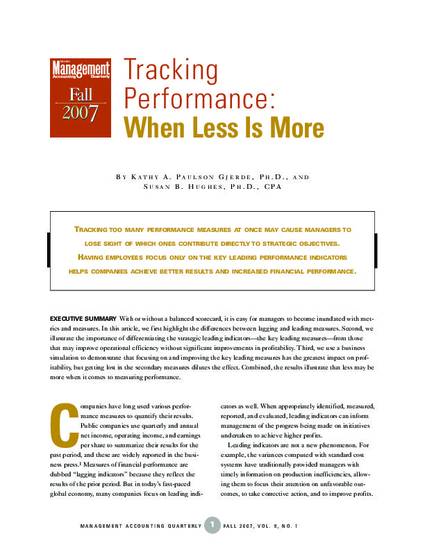
Article
Tracking Performance: When Less Is More
Management Accounting Quarterly
(2007)
Abstract
With or without a balanced scorecard, it is easy for managers to become inundated with metrics and measures. In this article, we first highlight the differences between lagging and leading measures. Second, we illustrate the importance of differentiating the strategic leading indicators-the key leading measures-from those that may improve operational efficiency without significant improvements in profitability. Third, we use a business simulation to demonstrate that focusing on and improving the key leading measures has the greatest impact on profitability, but getting lost in the secondary measures dilutes the effect. Combined, the results illustrate that less may be more when it comes to measuring performance.
Disciplines
- Business,
- Accounting and
- Economics
Publication Date
Fall 2007
Publisher Statement
Note: Link is to the article in a subscription database available to users affiliated with Butler University. Appropriate login information will be required for access. Users not affiliated with Butler University should contact their local librarian for assistance in locating a copy of this article.
Citation Information
Kathy A. Paulson Gjerde and Hughes S.. "Tracking Performance: When Less Is More" Management Accounting Quarterly Vol. 9 Iss. 1 (2007) p. 1 - 12 Available at: http://works.bepress.com/kathy_paulson_gjerde/12/
